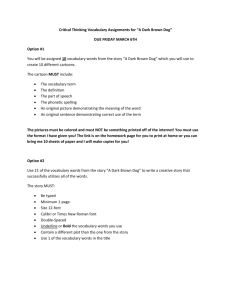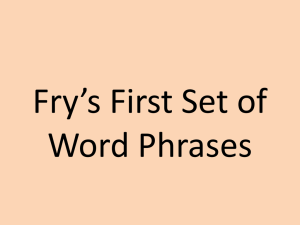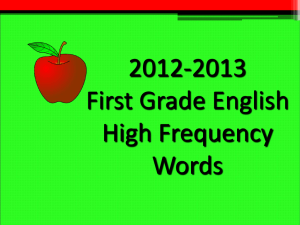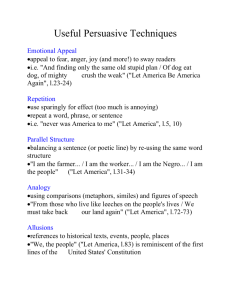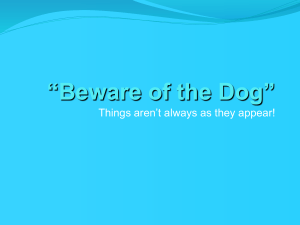Common behaviour patterns that add to reactivity
advertisement
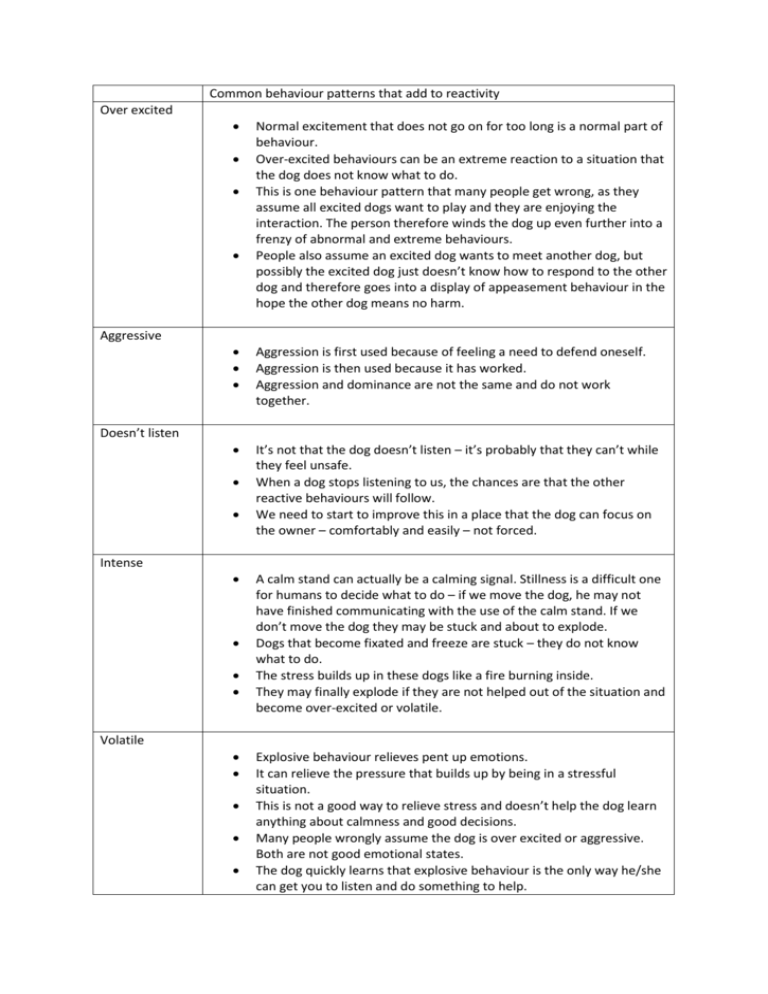
Common behaviour patterns that add to reactivity Over excited Normal excitement that does not go on for too long is a normal part of behaviour. Over-excited behaviours can be an extreme reaction to a situation that the dog does not know what to do. This is one behaviour pattern that many people get wrong, as they assume all excited dogs want to play and they are enjoying the interaction. The person therefore winds the dog up even further into a frenzy of abnormal and extreme behaviours. People also assume an excited dog wants to meet another dog, but possibly the excited dog just doesn’t know how to respond to the other dog and therefore goes into a display of appeasement behaviour in the hope the other dog means no harm. Aggressive Aggression is first used because of feeling a need to defend oneself. Aggression is then used because it has worked. Aggression and dominance are not the same and do not work together. It’s not that the dog doesn’t listen – it’s probably that they can’t while they feel unsafe. When a dog stops listening to us, the chances are that the other reactive behaviours will follow. We need to start to improve this in a place that the dog can focus on the owner – comfortably and easily – not forced. Doesn’t listen Intense A calm stand can actually be a calming signal. Stillness is a difficult one for humans to decide what to do – if we move the dog, he may not have finished communicating with the use of the calm stand. If we don’t move the dog they may be stuck and about to explode. Dogs that become fixated and freeze are stuck – they do not know what to do. The stress builds up in these dogs like a fire burning inside. They may finally explode if they are not helped out of the situation and become over-excited or volatile. Volatile Explosive behaviour relieves pent up emotions. It can relieve the pressure that builds up by being in a stressful situation. This is not a good way to relieve stress and doesn’t help the dog learn anything about calmness and good decisions. Many people wrongly assume the dog is over excited or aggressive. Both are not good emotional states. The dog quickly learns that explosive behaviour is the only way he/she can get you to listen and do something to help. Sensitive Stress can cause the dog to become sensitive to things that we think the dog should be able to deal with because they are normal things. Dogs can become sensitive to anything that happens in their life, such as your touch, the weather, light or dark, food etc. when they can associate it to the other things they perceive as stressful. Submissive Puppies will display puppy behaviour by being submissive, especially if they are unsure. If adult dogs display puppy submissiveness, they are unbalanced and find the situation stressful. An adult dog displaying puppy style submissiveness is acting abnormally to other dogs and is at risk of attack by them. Losing control of the bladder is a fear response. An excitable dog that toilets is probably more fearful than excited. Dominant Dogs tend to only dominate certain areas of their life – such as when they want to move away from something and they can’t. They are then forced to try other behaviours. They will not be dominant in all areas of their life, sometimes they will be fearful, unconfident, excited, playful, and even gentle. Dominance is only a very small part of any dog’s life. Dogs do not try to control us, they try to control a situation, in a way that helps them feel better. A dominant role at times is very useful and normal if it helps other members of the family deal with something. Destructive Destructive behaviours can be expressed for many reasons – none of them are personal. If a dogs innate need to chew something is not being met. Playfulness – encouraged by the owner – then scolded when the dog plays with the wrong thing, the dog does not know the difference! Stress – like someone smoking – the need to just be doing something. Boredom. Displacement behaviour. A way of coping with other stressors. Destructiveness can actually be a way of a dog dealing with the unpredictable or overbearing nature of humans. Short Fuse Anger, irritation, grumpy, moody, are all signs that the dog is not balanced. We need to find out what is causing the problem for the dog before their short fuse causes them to make a mistake we can’t forgive them for – such as biting – the last straw when your needs are being overlooked. A dog with a short fuse may actually be feeling vulnerable due to illness or pain. For example. It’s the dogs’ way of fending others off. Unpredictable The dog is probably not unpredictable, but we have probably missed the more subtle signs of what happened to cause the bigger reaction. Jekyll and Hyde behaviour is often a learnt response to the response you actually make to the situation – if you tense up the dog tenses up, but you only see the dog tensing up. Out of the blue or unprovoked behaviour is very rare – if ever – there is usually a subtle and unnoticed build up until the dogs response becomes so extreme that you take notice of it.
